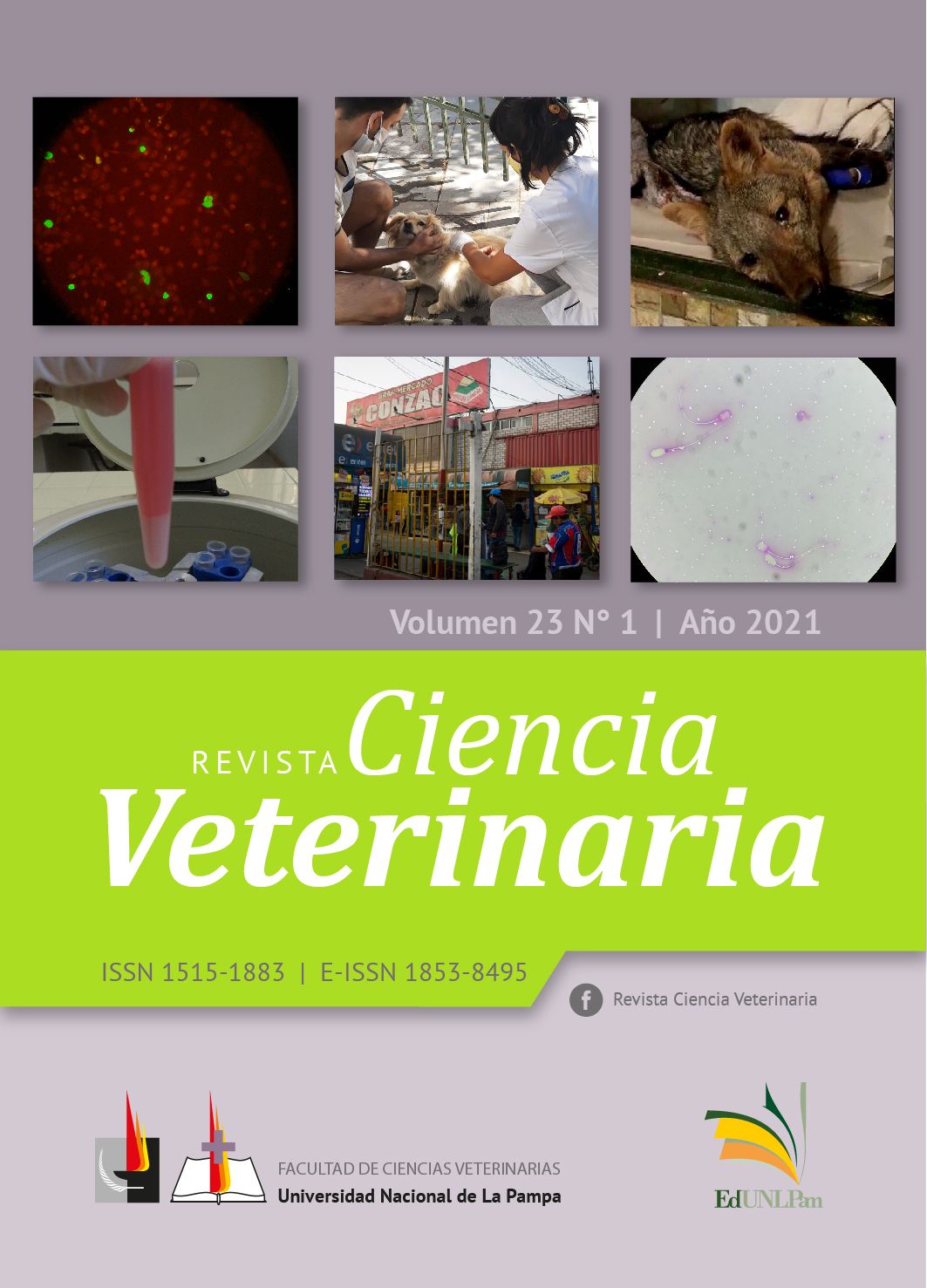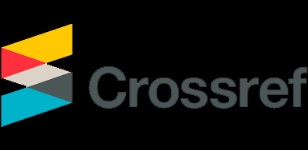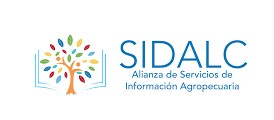Clamidiosis en aves
DOI:
https://doi.org/10.19137/cienvet202123104Palabras clave:
Chlamydiae, clamidias, aves, psitacosis, zoonosisResumen
Las especies del género Chlamydia pueden infectar diversos epitelios de humanos y animales, causando enfermedades de gravedad variable, algunas de trasmisión zoonótica, y pérdidas en la producción de alimentos. La psitacosis es una zoonosis causada por Chlamydia psittaci y ha sido ampliamente estudiada. Si bien la presencia de esta especie en los animales de cría no es una novedad, en los últimos años se ha incrementado la búsqueda y el reporte de distintas especies de clamidias, en especial en aves. El presente artículo de revisión tiene como objetivo brindar una actualización en las especies de Chlamydia involucradas en las infecciones aviares, su clasificación taxonómica, prevalencia en el mundo e importancia zoonótica y productiva.
Descargas
Citas
Zaręba-Marchewka K, Szymańska-Czerwińska M, Niemczuk K. Chlamydiae – what’s
new? J.Vet.Res. 2020;64(4):461–7.
Cheong HC, Lee CYQ, Cheok YY, Tan GMY, Looi CY, Wong WF. Chlamydiaceae: Diseases
in Primary Hosts and Zoonosis. Microorganisms [Internet]. 2019 May 24 [cited 2020
May 27];7(5). Available from: http://www.ncbi.nlm.nih.gov/pubmed/31137741
Sachse K, Laroucau K, Vanrompay D. Avian Chlamydiosis. Vol. 2, Curr. Clin. Microbiol.
Rep. Springer; 2015. p. 10–21
.
Vanrompay D. Avian Chlamydiosis. In: Diseases of Poultry: Thirteenth Edition. 2017.
Taylor-Brown A, Vaughan L, Greub G, Timms P, Polkinghorne A. Twenty years of research into Chlamydia-like organisms: A revolution in our understanding of the biology and pathogenicity of members of the phylum Chlamydiae. Pathogens and Disease. 2015;73(1):1–15.
Gupta RS, Naushad S, Chokshi C, Griffiths E, Adeolu M. A phylogenomic and molecular markers based analysis of the phylum Chlamydiae: proposal to divide the class Chlamydiia into two orders, Chlamydiales and Parachlamydiales ord. nov., and emended description of the class Chlamydiia. Antonie van Leeuwenhoek, International
Journal of General and Molecular Microbiology [Internet]. 2015 Sep 1 [cited 2021 Jan
;108(3):765–81. Available from: https://pubmed.ncbi.nlm.nih.gov/26179278/
Borel N, Greub G. International committee on systematics of prokaryotes (ICSP)
subcommittee on the taxonomy of chlamydiae. minutes of the closed meeting, 5 july
, woudschoten, zeist, The Netherlands. Vol. 69, Int. J. Syst. Evol. Microbiol.Microbiology Society; 2019. p. 2606–8.
Sachse K, Bavoil PM, Kaltenboeck B, Stephens RS, Kuo CC, Rosselló-Móra R, et al. Emendation of the family Chlamydiaceae: Proposal of a single genus, Chlamydia, to include all currently recognized species. Syst. Appl. Microbiol. [Internet]. 2015;38(2):99–103. Available from: http://dx.doi.org/10.1016/j.syapm.2014.12.004
Staub E, Marti H, Biondi R, Levi A, Donati M, Leonard CA, et al. Novel Chlamydia species isolated from snakes are temperature-sensitive and exhibit decreased susceptibility to azithromycin. Scientific Reports. 2018 Dec 1;8(1).
Everett KDE, Bush RM, Andersen AA. Emended description of the order Chlamydiales, proposal of Parachlamydiaceae fam. nov. and Simkaniaceae fam. nov., each containing one monotypic genus, revised taxonomy of the family Chlamydiaceae, including a new genus and five new species, and standards. Int. J. Syst. Evol. Microbiol.
[Internet]. 1999;49(2):415–40. Available from: http://ijs.microbiologyresearch.org/
content/journal/ijsem/10.1099/00207713-49-2-415
Stephens RS, Myers G, Eppinger M, Bavoil PM. Divergence without difference: phylogenetics and taxonomy of Chlamydia resolved. FEMS Immunology & Medical Microbiology [Internet]. 2009 Mar 1 [cited 2018 Sep 7];55(2):115–9. Available from: https:// academic.oup.com/femspd/article-lookup/doi/10.1111/j.1574 695X.2008.00516.x
Kalayoglu M v., Byrne GI. The Genus Chlamydia—Medical. In: The Prokaryotes [Internet]. New York, NY: Springer New York; 2006 [cited 2018 Sep 7]. p. 741–54. Available from: http://link.springer.com/10.1007/0-387-30747-8_30
Donati M, Laroucau K, Guerrini A, Balboni A, Salvatore D, Catelli E, et al. Chlamydiosis in Backyard Chickens ( Gallus gallus ) in Italy. Vector-Borne and Zoonotic Diseases [Internet]. 2018 Apr 1 [cited 2020 Mar 8];18(4):222–5. Available from: http://www. ncbi.nlm.nih.gov/pubmed/29595407
Magnino S, Haag-Wackernagel D, Geigenfeind I, Helmecke S, Dovč A, Prukner-Radovčić E, et al. Chlamydial infections in feral pigeons in Europe: Review of data and
focus on public health implications. Veterinary Microbiology [Internet]. 2009 Mar 16
[cited 2020 Mar 8];135(1–2):54–67. Available from: http://www.ncbi.nlm.nih.gov/
pubmed/18977610
Guo W, Li J, Kaltenboeck B, Gong J, Fan W, Wang C. Chlamydia gallinacea, not C. psittaci, is the endemic chlamydial species in chicken (Gallus gallus). Scientific Reports
[Internet]. 2016 Apr 18 [cited 2020 Mar 8];6(1):19638. Available from: http://www.
ncbi.nlm.nih.gov/pubmed/26778053
Sachse K, Laroucau K. Avian chlamydiosis: Two more bacterial players discovered
[Internet]. Vol. 200, Veterinary Journal. Bailliere Tindall Ltd; 2014 [cited 2021
Jan 27]. p. 347–8. Available from: https://linkinghub.elsevier.com/retrieve/pii/
S1090023314001026
Laroucau K, Vorimore F, Aaziz R, Solmonson L, Hsia RC, Bavoil PM, et al. Chlamydia
buteonis, a new Chlamydia species isolated from a red-shouldered hawk. Syst. Appl.
Microbiol.2019 Sep 1;42(5).
Elwell C, Mirrashidi K, Engel J. Chlamydia cell biology and pathogenesis. Vol. 14, Nature Reviews Microbiology. Nature Publishing Group; 2016. p. 385–400.
Bastidas RJ, Elwell CA, Engel JN, Valdivia RH. Chlamydial intracellular survival strategies. Cold Spring Harb Perspect Med. 2013;3(5).
Wannaratana S, Thontiravong A, Amonsin A, Pakpinyo S. Persistence of Chlamydia
psittaci in Various Temperatures and Times. Avian Diseases [Internet]. 2017
Mar [cited 2020 Mar 8];61(1):40–5. Available from: http://www.ncbi.nlm.nih.gov/
pubmed/28301242
Szymańska-Czerwińska M, Mitura A, Zaręba K, Schnee C, Koncicki A, Niemczuk
K. Poultry in Poland as Chlamydiaceae Carrier. J.Vet. Res. [Internet]. 2017 Dec [cited
May 27];61(4):411–9. Available from: http://www.ncbi.nlm.nih.gov/
pubmed/29978103
Sachse K, Kuehlewind S, Ruettger A, Schubert E, Rohde G. More than classical Chlamydia psittaci in urban pigeons. Veterinary Microbiology. 2012 Jun 15;157(3–4):476– 80.
Ghorbanpoor M, Bakhtiari N-M, Mayahi M, Moridveisi H. Detection of Chlamydophila psittaci from pigeons by polymerase chain reaction in Ahvaz. Iranian J. Microb. [Internet].
Feb [cited 2020 Mar 8];7(1):18–22. Available from: http://www.ncbi.nlm.
nih.gov/pubmed/26644869
Marenzoni ML, Morganti G, Moretta I, Crotti S, Agnetti F, Moretti A, et al. Microbiological and parasitological survey of zoonotic agents in apparently healthy feral pigeons. Pol. J. Vet. Sci. [Internet]. 2016 Jun 1 [cited 2020 Mar 8];19(2):309–15. Available rom: http://journals.pan.pl/dlibra/publication/120979/edition/105380/content
Geigenfeind I, Vanrompay D, Haag-Wackernagel D. Prevalence of Chlamydia psittaci
in the feral pigeon population of Basel, Switzerland. J.Med.Microbiol. [Internet]. 2012
Feb [cited 2020 May 27];61(Pt 2):261–5. Available from: http://www.ncbi.nlm.nih.
gov/pubmed/21921110
Čechová L, Halánová M, Kalinová Z, Čisláková L, Halán M, Valenčáková A. Detection of CHLAMYDIA PSITTACI in feral pigeons (COLUMBA LIVIA DOMESTICA) in Slovakia and their characterisation. AAEM. [Internet]. 2015 Dec 4 [cited 2020 Mar 8];23(1):75–8. Available from: http://www.ncbi.nlm.nih.gov/pubmed/27007521
Hogerwerf L, Roof I, de Jong MJK, Dijkstra F, van der Hoek W. Animal sources for
zoonotic transmission of psittacosis: a systematic review. BMC Infectious Diseases
[Internet]. 2020 Dec 4 [cited 2020 Mar 8];20(1):192. Available from: https://bmcinfectdis. biomedcentral.com/articles/10.1186/s12879-020-4918-y
Mattmann P, Marti H, Borel N, Jelocnik M, Albini S, Vogler BR. Chlamydiaceae in wild, feral and domestic pigeons in Switzerland and insight into population dynamics by Chlamydia psittaci multilocus sequence typing. Yildirim A, editor. PLOS ONE [Internet]. 2019 Dec 30 [cited 2020 Mar 8];14(12):e0226088. Available from: http://www. ncbi.nlm.nih.gov/pubmed/31887111
Kaleta EF, Taday EMA. Avian host range of Chlamydophila spp. based on isolation,
antigen detection and serology. Vol. 32, Avian Pathology. 2003. p. 435–62.
Mair-Jenkins J, Lamming T, Dziadosz A, Flecknoe D, Stubington T, Mentasti M, et al.
A Psittacosis Outbreak among English Office Workers with Little or No Contact with
Birds, August 2015. PLoS Currents [Internet]. 2018 Apr 27 [cited 2020 Mar 8];10.
Available from: http://www.ncbi.nlm.nih.gov/pubmed/29854568
Burt SA, Röring RE, Heijne M. Chlamydia psittaci and C. avium in feral pigeon ( Columba livia domestica ) droppings in two cities in the Netherlands. Veterinary Quarterly [Internet]. 2018 Jan 1 [cited 2020 Mar 8];38(1):63–6. Available from: http://www. ncbi.nlm.nih.gov/pubmed/29806552
Marenzoni ML, Morganti G, Moretta I, Crotti S, Agnetti F, Moretti A, et al. Microbiological and parasitological survey of zoonotic agents in apparently healthy feral pigeons. Pol. J.Vet. Sci. [Internet]. 2016 [cited 2020 Mar 8];19(2):309–15. Available from: http://www.ncbi.nlm.nih.gov/pubmed/27487504
Perez-Sancho M, García-Seco T, Porrero C, García N, Gomez-Barrero S, Cámara JM, et
al. A ten-year-surveillance program of zoonotic pathogens in feral pigeons in the City
of Madrid (2005–2014): The importance of a systematic pest control. Vet. Sci. Res. J.
[Internet]. 2020 Feb 1 [cited 2020 Mar 8];128:293–8. Available from: http://www.
ncbi.nlm.nih.gov/pubmed/31869595
Santos HM, Tsai CY, Catulin GEM, Trangia KCG, Tayo LL, Liu HJ, et al. Common bacterial, viral, and parasitic diseases in pigeons (Columba livia): A review of diagnostic and treatment strategies. Vol. 247, Veterinary Microbiology. Elsevier B.V.; 2020.
Burt SA, Röring RE, Heijne M. Chlamydia psittaci and C. avium in feral pigeon (Columba livia domestica) droppings in two cities in the Netherlands. The veterinary quarterly [Internet]. 2018 Dec 1 [cited 2020 May 27];38(1):63–6. Available from: http:// www.ncbi.nlm.nih.gov/pubmed/29806552
Mattmann P, Marti H, Borel N, Jelocnik M, Albini S, Vogler BR. Chlamydiaceae in wild, feral and domestic pigeons in Switzerland and insight into population dynamics
by Chlamydia psittaci multilocus sequence typing. PloS one [Internet]. 2019 [cited
May 27];14(12):e0226088. Available from: http://www.ncbi.nlm.nih.gov/
pubmed/31887111
Liu S-Y, Li K-P, Hsieh M-K, Chang P-C, Shien J-H, Ou S-C. Prevalence and Genotyping
of Chlamydia psittaci from Domestic Waterfowl, Companion Birds, and Wild Birds in
Taiwan. Vector-Borne and Zoonotic Diseases [Internet]. 2019 Sep 1 [cited 2020 Mar
;19(9):666–73. Available from: http://www.ncbi.nlm.nih.gov/pubmed/30855216
Sheleby-Elías J, Solórzano-Morales Á, Romero-Zuñiga JJ, Dolz G. Molecular detection and genotyping of chlamydia psittaci in captive psittacines from Costa Rica. Vet. Med. Int. 2013.
Rodríguez-Leo C, Hernández V, Abou Orm S, Díaz Y, Camacho D, Arraiz N, et al.
Chlamydia psittaci en aves psitacidas en dos parques zoológicos de Venezuela. Acta
Biologica Colombiana [Internet]. 2017 [cited 2021 Jan 31];22(3):394–7. Available
from: http://dx.doi.org/10.15446/abc.v22n3.64742http://www.revistas.unal.edu.
co/index.php/actabiolNOTABREVE/BRIEFNOTE
Sachse K, Vretou E, Livingstone M, Borel N, Pospischil A, Longbottom D. Recent developments in the laboratory diagnosis of chlamydial infections. Vet. Microbiol.
;135(1–2):2–21.
Sachse K, Laroucau K, Hotzel H, Schubert E, Ehricht R, Slickers P. Genotyping of
Chlamydophila psittaci using a new DNA microarray assay based on sequence analysis
of ompA genes. BMC Microbiology [Internet]. 2008 [cited 2021 Jan 30];8. Available
from: https://pubmed.ncbi.nlm.nih.gov/18419800/
ML. Gallo Vaulet, AI. Portu, AC. Entrocassi, M. Mestre, K. Sachse, M. Rodriguez Fermepin. Chlamydiaceae species and Chlamydia psittaci detection in fecal droppings from pigeons in Buenos Aires City public squares. In Amsterdam: Seventh Meeting of the European Society for Chlamydia research. Amsterdam, Holanda; 2012.
Sachse K, Laroucau K, Riege K, Wehner S, Dilcher M, Creasy HH, et al. Evidence for the existence of two new members of the family Chlamydiaceae and proposal of Chlamydia avium sp. nov. and Chlamydia gallinacea sp. nov. Syst. Appl. Microbiol. [Internet]. 2014 Mar [cited 2021 Jan 27];37(2):79–88. Available from: https://pubmed.ncbi. nlm.nih.gov/24461712/
Laroucau K, Vorimore F, Aaziz R, Berndt A, Schubert E, Sachse K. Isolation of a new
chlamydial agent from infected domestic poultry coincided with cases of atypical pneumonia among slaughterhouse workers in France. Infect. Genet. Evol. [Internet].
Dec [cited 2021 Jan 31];9(6):1240–7. Available from: https://pubmed.ncbi.
nlm.nih.gov/19715775/
Sachse K, Laroucau K. Two more species of Chlamydia-does it make a difference?
FEMS Pathogens and Disease [Internet]. 2015;73:1–3. Available from: https://academic. oup.com/femspd/article/73/1/1/527472
Publicado
Número
Sección
Licencia
Al momento de enviar sus contribuciones, los colaboradores deberán declarar , de manera fehaciente, que poseen el permiso del archivo o repositorio donde se obtuvieron los documentos que se anexan al trabajo, cualquiera sea su formato (manuscritos inéditos, imágenes, archivos audiovisuales, etc.), permiso que los autoriza a publicarlos y reproducirlos, liberando a la revista y sus editores de toda responsabilidad o reclamo de terceros , los autores deben adherir a la licencia Creative Commons denominada “Atribución - No Comercial CC BY-NC-SA”, mediante la cual el autor permite copiar, reproducir, distribuir, comunicar públicamente la obra y generar obras derivadas, siempre y cuando se cite y reconozca al autor original. No se permite, sin embargo, utilizar la obra con fines comerciales.








.jpg)

4.png)


7.png)






